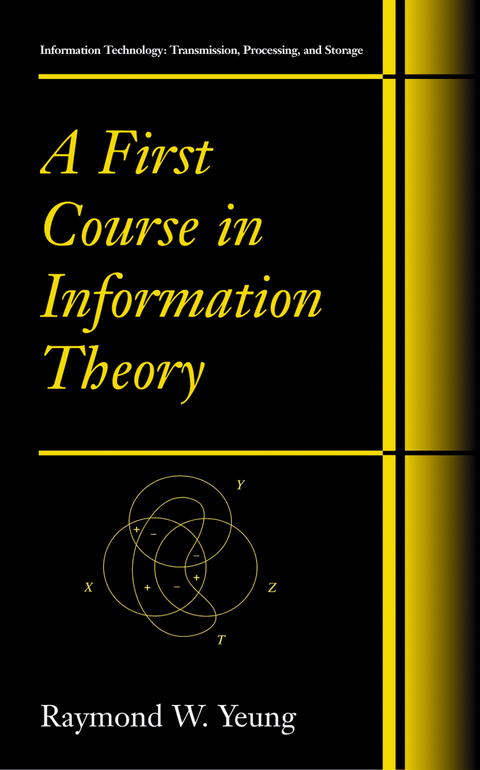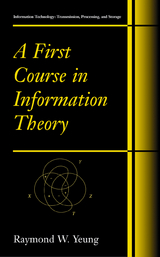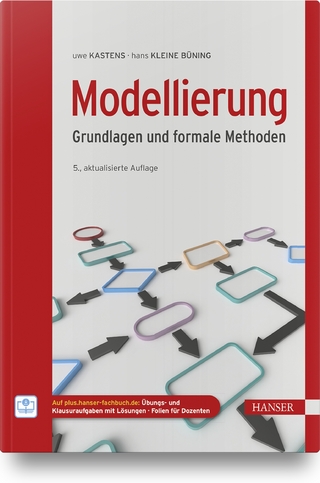A First Course in Information Theory
Kluwer Academic/Plenum Publishers (Verlag)
978-0-306-46791-2 (ISBN)
1. The Science of Information.- Information Measures.- 2.1 Independence and Markov Chains.- 2.2 Shannon’s Information Measures.- 2.3 Continuity of Shannon’s Information Measures.- 2.4 Chain Rules.- 2.5 Informational Divergence.- 2.6 The Basic Inequalities.- 2.7 Some Useful Information Inequalities.- 2.8 Fano’s Inequality.- 2.9 Entropy Rate of Stationary Source.- Problems.- Historical Notes.- 3. Zero-Error Data Compression.- 3.1 The Entropy Bound.- 3.2 Prefix Codes.- 3.3 Redundancy of Prefix Codes.- Problems.- Historical Notes.- 4. Weak Typicality.- 4.1 The Weak.- 4.2 The Source Coding Theorem.- 4.3 Efficient Source Coding.- 4.4 The Shannon-McMillan-Breiman Theorem.- Problems.- Historical Notes.- 5. Strong Typicality.- 5.1 Strong.- 5.2 Strong Typicality Versus Weak Typicality.- 5.3 Joint Typicality.- 5.4 An Interpretation of the Basic Inequalities.- Problems.- Historical Notes.- The I-measure.- 6.1 Preliminaries.- 6.2 The I-Measure for Two Random Variables.- 6.3 Construction of the I-Measure ?*.- 6.4 ?* Can be Negative.- 6.5 Information Diagrams.- 6.6 Examples of Applications.- Appendix 6.A: A Variation of the Inclusion-Exclusion Formula.- Problems.- Historical Notes.- 7. Markov Structures.- 7.1 Conditional Mutual Independence.- 7.2 Full Conditional Mutual Independence.- 7.3 Markov Random Field.- 7.4 Markov Chain.- Problems.- Historical Notes.- 8. Channel Capacity.- 8.1 Discrete Memoryless Channels.- 8.2 The Channel Coding Theorem.- 8.3 The Converse.- 8.4 Achievability of the Channel Capacity.- 8.5 A Discussion.- 8.6 Feedback Capacity.- 8.7 Separation of Source and Channel Coding.- Problems.- Historical Notes.- 9. Rate-Distortion Theory.- 9.1 Single-Letter Distortion Measures.- 9.2 The Rate-Distortion Function R(D).- 9.3 The Rate-Distortion Theorem.- 9.4 The Converse.- 9.5 Achievability of RI(D).- Problems.- Historical Notes.- The Blahut-Arimoto Algorithms.- 10.1 Alternating Optimization.- 10.2 The Algorithms.- 10.3 Convergence.- Problems.- Historical Notes.- 11. Single-Source Network Coding.- 11.1 A Point-to-Point Network.- 11.2 What is Network Coding?.- 11.3 A Network Code.- 11.4 The Max-Flow Bound.- 11.5 Achievability of the Max-Flow Bound.- Problems.- Historical Notes.- 12. Information Inequalities.- 12.1 The Region ?*n.- 12.2 Information Expressions in Canonical Form.- 12.3 A Geometrical Framework.- 12.4 Equivalence of Constrained Inequalities.- 12.5 The Implication Problem of Conditional Independence.- Problems.- Historical Notes.- 13. Shannon-Type Inequalities.- 13.1 The Elemental Inequalities.- 13.2 A Linear Programming Approach.- 13.3 A Duality.- 13.4 Machine Proving.- 13.5 Tackling the Implication Problem.- 13.6 Minimality of the Elemental Inequalities.- Appendix 13.A: The Basic Inequalities and the Polymatroidal Axioms.- Problems.- Historical Notes.- Problems.- Historical Notes.- 14. Beyond Shannon-Type Inequalities.- 14.1 Characterizations of ?*2,?*3, and ?*n.- 14.2 A Non-Shannon-Type Unconstrained Inequality.- 14.3 A Non-Shannon-TypeConstrained Inequality.- 14.4 Applications.- Problems.- Historical Notes.- 978-1-4419-8608-5_15.- 15.1 Two Characteristics.- 15.2 Examples of Application.- 15.3 A Network Code for Acyclic Networks.- 15.4 An Inner Bound.- 15.5 An Outer Bound.- 15.6 The LP Bound and Its Tightness.- 15.7 Achievability of Rin.- Appendix 15.A: Approximation of Random Variables with Infinite Alphabets.- Problems.- Historical Notes.- 16. Entropy and Groups.- 16.1 Group Preliminaries.- 16.2 Group-Characterizable Entropy Functions.- 16.3 A Group Characterization of ?*n.- 16.4 Information Inequalities and Group Inequalities.- Problems.- Historical Notes.
| Reihe/Serie | Information Technology: Transmission, Processing and Storage |
|---|---|
| Zusatzinfo | XXIII, 412 p. |
| Verlagsort | New York |
| Sprache | englisch |
| Maße | 155 x 235 mm |
| Themenwelt | Mathematik / Informatik ► Informatik ► Theorie / Studium |
| Mathematik / Informatik ► Mathematik | |
| Technik ► Elektrotechnik / Energietechnik | |
| ISBN-10 | 0-306-46791-7 / 0306467917 |
| ISBN-13 | 978-0-306-46791-2 / 9780306467912 |
| Zustand | Neuware |
| Haben Sie eine Frage zum Produkt? |
aus dem Bereich




